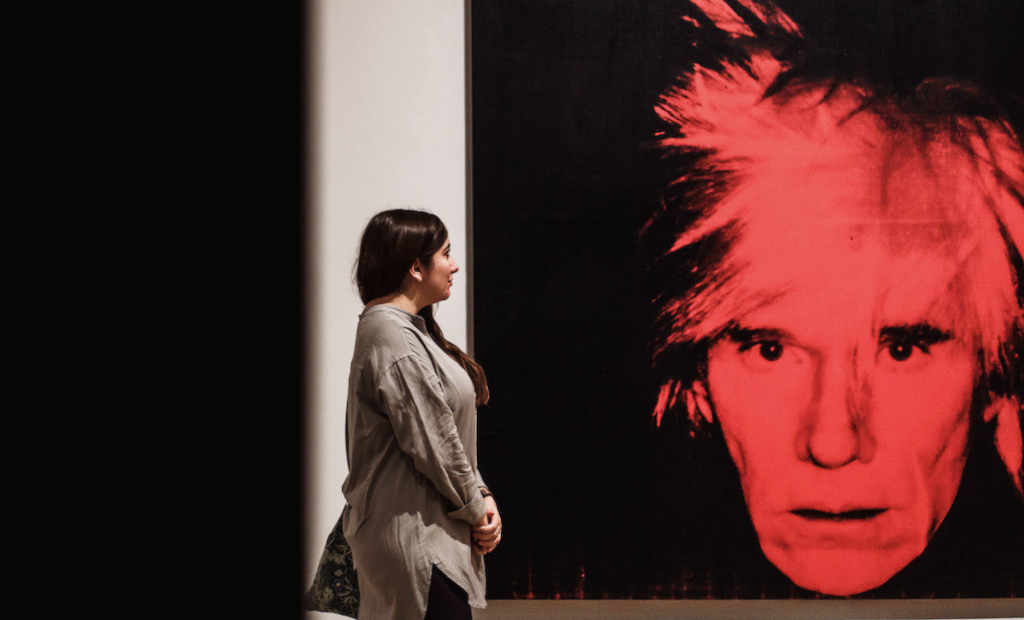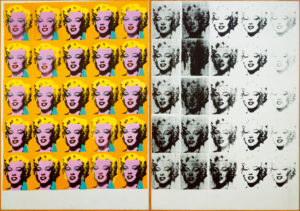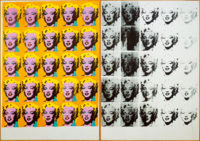Andy Warhol at Tate Modern caught in between retrospective and thematic

Do we have an Andy Warhol problem? It became clear by attending Tate Modern’s exhibition, which I was greatly looking forward to. The issue, probably, is that Warhol is perceived to be obsessed with the things we claim to be sick and tired of today: celebrity, consumerism, artifice.
“There was a man under those wigs!” the curators – showing us the wigs – are desperate to inform us. We are immediately introduced, not to Andy Warhol, but to Andrew Warhola, the Carpatho-Russian immigrant who dropped an “a” at the end of this name, whose mother came to polluted Pittsburgh via New York’s Ellis Island and whose coal-mining father died when the artist was 13.
We see (arguably the high point of the show) some quite ravishing line drawings of young men from the 1950s – chimneys, smog and a family immigration certificate. We are being sold authenticity.
But, Warhol was no Stanley Kowalski – and that is to his credit. Despite his challenging origins, he studied Commercial Art at what is now Carnegie Mellon University and quickly became a prize-winning designer as soon as he could. He may have been influenced by religious icons – as the programme states if we can consider them authentic, but he was part and parcel of the American dream.
As if to confirm this, the exhibition delves into full-on pop Andy: Brillo boxes, Elvis Presley, Marilyn Monroe, Jackie O. Much needed gravitas comes with Pink Race Riot: a screen print of an anti-racism protestor being bitten by a police dog, another under an overturned car and a suicide victim. Death is authentic, an antidote to consumerism.
Later on, visitors encounter Warhol’s skulls, strong works, which are thickly plastered in cooler colours, light yellow, reds, turquoise and mint greens. They are convincingly morbid and follow an overly in-depth examination of the artist’s quite literal brush with death – he was pronounced dead after being savagely shot by Valerie Solanas.
The other fairly different authenticity rabbit hole this exhibition goes down is that of identity politics. A very striking series of New York’s drag queens of colour, which was commissioned, features Marsha P. Johnson who, legend incorrectly has it, started the Stonewall riots.
Warhol’s hand and his paint are everywhere in these screenprints. But the labelling gets caught up in naming and then not naming the subjects, and in whether tracking down the drag queens was exploitative.
Death and identity politics come together in the final, stupendous room: 60 Last Suppers, where screen prints of Da Vinci’s famously faded masterpiece are reverentially lit. This is said to be “considered in relation” to the HIV/AIDS epidemic.
A brief foray into “The Factory” room showcases interesting “prepared” projectors, separated by a corridor of half-helium-inflated oblong balloons (Silver Clouds), followed by a saunter into “The Interview Magazine” room, which only makes things more confused. However, Torso, an upside-down bum, and colourful commissions of Debbie Harry, Mick Jagger and Dolly Parton, causing this section to be memorable for surface-level reasons.
All in all, the show ends up being neither a satisfying introductory retrospective – because it’s too weirdly put together – nor a thematically filtered exhibition, because it never finds a sufficient seam of material to explore.
It’s a relief to finally get into the gift shop. Now you know where you are.
Michael Willoughby
Photos: Danny Jack
Andy Warhol is at Tate Modern caught in between a retrospective and thematic exhibition from 12th March until 6th September 2020. For further information visit the exhibition’s website here.




















Facebook
Twitter
Instagram
YouTube
RSS